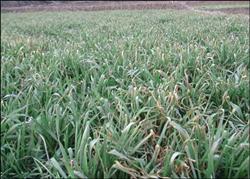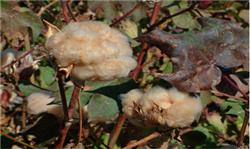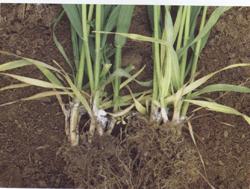Remedial measures for Spring Frost of Wheat

In February and March of every spring, cold air often erupts southward in the north, and the cooling range is large in the process. The wheat that jointing prematurely often suffers from freezing injury. At this time, for the seedlings that grow too much, we should adopt suppression methods to inhibit growth; rational topdressing of weak seedlings, promotion of weak and strong, in order to enhance cold resistance, at the same time, we should pay attention to listening to weather forecasts, irrigation before the arrival of cold waves, or organize large-scale unified smoking, in order to prevent and reduce freezing damage. 1. Wheat after jointing is not cold-resistant Wheat is a relatively low-temperature-tolerant crop, but the cold resistance of wheat is related to its development stage. At seedling stage, cold resistance was the strongest at vernalization stage, and decreased further after vernalization. When freezing occurs, under the action of low temperature, the water in wheat cell tissue will freeze, when the ice between cells increases, the cell is damaged, if the temperature drops further, the cell will freeze, resulting in death. After wheat jointing, when it encounters low temperature of-1℃-4℃, young ears may be frozen to death or form abnormal ears. The greater the amplitude and steepness of cooling process and the longer the duration of low temperature, the more serious the harm will be. Second, check the degree of damage after freezing. After freezing, check the degree of damage in time. The focus of inspection is on young ears. Where young panicles freeze to death plants, heart leaves no longer elongate, most rolled into a trumpet shape, a few directly withered and died. However, some frozen plants give false appearance, the leaves can still maintain green color, and some even to 10-15 days later before wilting, so to further peel the young ears to see, such as the young ears were found milky opaque, that is, frozen to death. III. REMEDIATIVE MEASURES 1, frozen wheat fields do not plow at will. Spring frost damage occurs in spring, when the root system of wheat seedlings is already very developed, tiller nodes are also relatively strong, even if the aboveground part of the plant is completely frozen to death, root system and tiller will not die, as long as the management is strengthened, with the same temperature rise, new tillers will soon grow, and still heading and bearing fruit. 2, frozen yellow leaves and "dead tillers" do not cut. The results showed that after freezing, the root system of "dead tiller" had stronger ability to absorb fertilizer than that of live tiller in a certain period of time. After the main stem and big tiller were frozen to death, the nutrients absorbed by the root system could be transferred to the living tiller, which was beneficial to the recovery of vitality of frozen wheat seedlings and the increase of tillers into ears. 3. Topdressing and watering. After freezing, the nutrient consumption in wheat is too much, and the seedling potential is very weak. With the rise of temperature, new tillers grow rapidly, which requires a lot of water and nutrients. It is necessary to water and topdress in time, and apply urea 5-7.5 kg/mu according to the seedling situation, or spray 1%-2% urea solution on the leaves to promote the recovery growth.
- Prev

When is the best time to accelerate the ripening of late cotton?
In recent years, we have tried to grow cotton with light brown, dark brown, green and other colors. The results show that in order to obtain better color effect and high yield, we should grasp the following five keys in cultivation. First, suitable early sowing and early transplanting according to the growth habits of colored cotton, should be appropriate early sowing, we should be at the end of March.
- Next

Wheat catch four defenses in spring
1. Occurrence and harm of wheat sheath blight wheat sheath blight is a kind of fungal disease mainly transmitted by soil. With the improvement of the level of yield, the harm of the popularization of high-yield varieties and the management of wheat fields with heavy water and fertilizer is becoming more and more serious. The host range of wheat sheath blight is wide, in addition to infecting wheat, but also.
Related
- The first cup of black tea in spring, the flavor and history of tea gardens in Kenya, Africa
- The computer can not only choose potatoes, but also grow tea rice. AI will grow winter oolong tea champion.
- It is not only the inflated tea bitten by insects, but also engraved with the four seasons tea in Beipu.
- The Oriental Beauty Tea Festival in Zhuxian County takes the stage at the weekend to experience the plus-size feast of oil tea.
- & quot; Oriental Beauty Tea & Exploration of Emei in Hsinchu, the hometown of quot;
- The new variety of strawberry "Tainong 1" dessert is the first choice with mellow aroma. Crimson gorgeous
- History of Tea in Taiwan: from Wild Inner Mountain to Export Tea Garden
- Two types of Taiwan Oriental Beauty Black Tea won the British three-Star Award for Childhood Tea Xiang Zhang Jiaqi changed from pilot to champion tea maker.
- Banana species and varieties: the planting history of Taiwan Xianren banana and dwarf banana is long, is banana disease resistant?
- Coffee planting Technology: Qianjie Coffee from Seedling to harvesting

